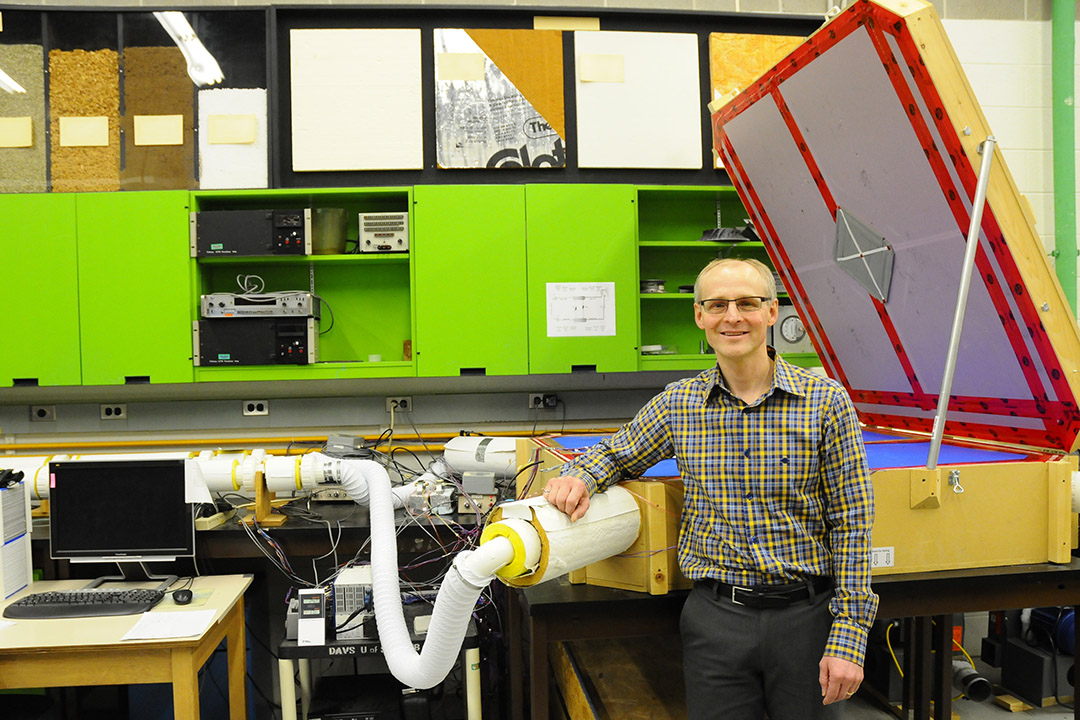
People of the Plan: Seeking Saskatchewan Solutions
Industry innovation and collaboration have always gone hand-in-hand for Dr. Carey Simonson (PhD).
By James ShewagaFor the past two decades, the award-winning professor has built on a long tradition of training future academic researchers and industry leaders in the College of Engineering at the University of Saskatchewan (USask).
“I think that is where we have our biggest impact,” said Simonson, who has supervised more than 50 graduate and post-doctoral researchers, with many going on to become leaders in industry and academia. “In our college, we certainly develop technology that has industrial applications and impacts, but every master’s and PhD student who graduates will have an even larger impact over their 30 to 40-year career.
“The college has a long history of training experts to work in industry. So, every year, we increase the number of people we have trained for Canadian industries and abroad, and hopefully that continues to make an impact and a difference in the world.”
While the new university plan was just unveiled in October, engineering experts on campus like Simonson have been guided by key principles of the plan for years, engaging with industry on innovative initiatives to seek solutions for the benefit of society, and embracing entrepreneurial opportunities for students, faculty and staff.
“Without industry involvement, we wouldn’t have the opportunities to train students to find solutions to relevant problems that make Canada a better place and more competitive globally,” said Simonson, whose current work with national and international researchers and industry leaders is supported by more than $600,000 in funding received from the Natural Sciences and Engineering Research Council of Canada (NSERC) since 2015.
Simonson, who earned his bachelor’s (1991), master’s (1993) and PhD (1998) at USask, has continued the college’s success in improving heating, ventilation and air conditioning (HVAC) technology. He has followed in the footsteps of engineering colleagues like professor emeritus Robert Besant, who developed air exchange technology at USask 40 years ago that is now used in most homes and spawned a $3 billion industry.
In 2015, Simonson and Besant were co-winners of the NSERC Synergy Award for Innovation, for collaboration with a local company to improve heating and cooling systems. The HVAC technology developed through this collaboration not only saves money, but improves energy efficiency and reduces greenhouse gas emissions.
USask research has since been applied by companies like Facebook, which announced in 2018 that it is using technology developed in Saskatoon to cool computers in its data centres.
“(Facebook) is a neat application of the work that we are doing,” said Simonson, who is now working with post-doctoral fellow Dr. Farid Bahiraei (PhD) and a local company started by former USask master’s student Soheil Akbari to design a new system to regulate temperature in individual rooms in homes, to increase comfort and cut costs.
With climate change increasing the need for cooling systems around the world, the work of researchers like Simonson will have international impact for years to come.
“The Intergovernmental Panel on Climate Change projects that cooling energy consumption is going to increase thirty-fold this century,” said Simonson, who is now the associate dean of Graduate Studies and Strategic Projects in the College of Engineering. “Buildings are large consumers of energy and HVAC systems are the largest component of buildings themselves, so developing better HVAC systems will be more and more important.”
The University the World Needs
People of the plan

